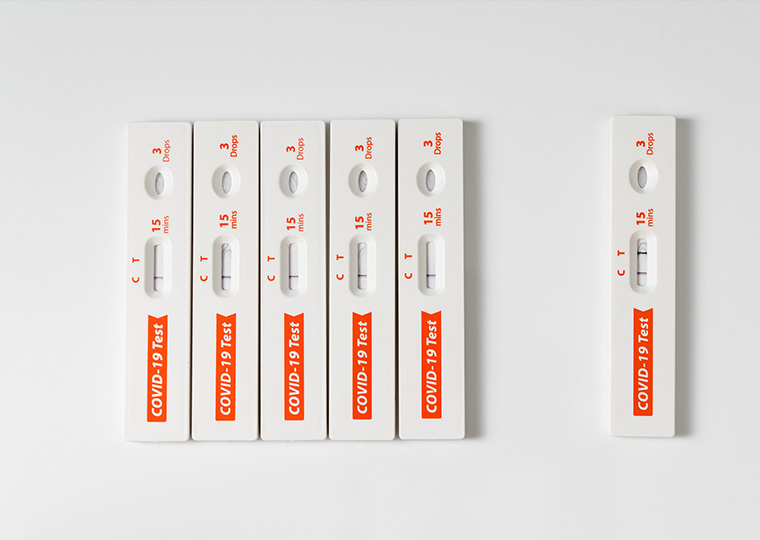An innovative upside to overvalued stocks?
Hand a publicly traded company a highly valued stock price and its management will often load up on expensive capital equipment or overpay to acquire other firms. Both moves can backfire and turn off investors.
But these same managers, as a group, apparently do at least one smart thing: aggressively pursue technological innovation.
Research published in the Journal of Financial and Quantitative Analysis suggests that companies with overvalued stock are more inclined to innovate. And not just let’s-tweak-what-we’re-already-good-at R&D, but more substantial and outside-the-box initiatives.
Analyzing public company fiscal-year valuation, R&D outlays, and patent activity from 1981 through 2012, York University’s Ming Dong, USC’s David Hirshleifer and UCLA Anderson’s Siew Hong Teoh find that firms they deem overvalued in a given year (more on their approach to valuation below) are more inclined to apply for highly inventive patents that push into new areas. These firms also harness the patented innovations of others, across a broad swath of technologies. In turn, the approved new patents go on to become cited relatively often by other creators, suggesting they are game changers.
“Overvaluation encourages firms to engage in moonshot projects in the sense of very high inventiveness,” the authors write. And those efforts may be good for the economy, which requires innovation to grow.
That is not to say that the innovation pays off for the firm or its shareholders in the form of commercial product sales. The focus of this research establishes solely that overvaluation seems to spur more efforts at inventiveness, and this results in innovation in the form of patents.
What’s an Overvalued Stock?
The researchers relied on existing studies that have established a way to get at valuation that is not merely tied to a firm’s growth prospects. Their model used quarterly mutual fund outflows to infer equity misvaluation. The central construct of the model explores the hypothetical selling of a stock assuming funds sell stocks in proportion to their portfolio weight. In this approach, stocks that are sold less in periods of fund outflows are deemed more overvalued.
The authors computed the valuation measure at the end of a firm’s fiscal year and then used that level to study R&D spending and patent activity in the following year.
They found that firms that were substantially higher (by an amount defined in the study design) in overvaluation increased their R&D spending in the following year by 16.8%, relative to average R&D spending, scaled by assets, across their entire database of 9%. These firms also registered more new patents in that year.
Overvalued Firms Push the Envelope
Their core interest was in exploring the nature of the patents. They developed a three-tier approach to measure the level of inventiveness.
To get at the importance of a patent, the authors tracked how many citations a patent received as of the date in the patent database. They also parsed out how many different technical fields those citations fell into, to get at the scope of the new patent’s impact on innovation in the economy. And they incorporated prior research that has established an originality factor for patents: a patent that cites prior patents across a variety of technologies is considered to be more inventive than one that sticks within a narrow lane.
Using those three as a proxy for inventiveness, the researchers found that overvalued firms are more likely to push the envelope. For an increase in overvaluation by an amount defined in the study design, their patents received 9.8% more citations than the average firm. In terms of patent scope (citations across different technologies) these firms scored 9.6% higher than the average, and their score for originality was nearly 8% higher.
The researchers also found that firms with the greatest overvaluation devoted even more resources to R&D and had much higher inventiveness scores. That plays to the notion that managers at overvalued firms who attract hotter money can feel pressure to maintain that overvaluation by “catering” to their shareholders. Higher R&D spending and more new product development (measured by patent activity) seem to operate as bright shiny objects they hope will keep more investors invested. As noted earlier, that is merely an intention. Even though there is payoff in terms of more innovative patents, there’s no guarantee the pursuit of moonshots pays off in dollar profits for the firm or its shareholders.
Featured Faculty
-
Siew Hong Teoh
Lee and Seymour Graff Endowed Professor; Professor of Accounting
About the Research
Dong, M., Hirshleifer, D., Teoh, S.H., (2020). Misvaluation and Corporate Inventiveness. Journal of Financial and Quantitative Analysis. 56(8), 2605-2633. doi:10.1017/S0022109020000666






